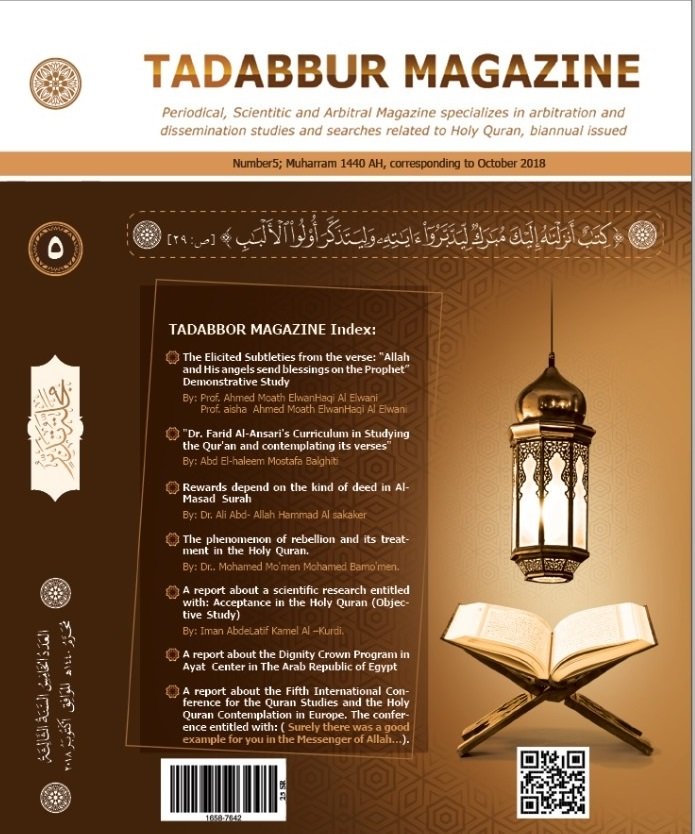The Elicited Subtleties from the verse: “Allah and His angels send blessings on the Prophet” Demonstrative Study
Main Article Content
Abstract
This research explains the verse: “Allah and His angels
send blessings on the Prophet”. The researcher divided the research to an introduction, preface and six chapters.
Introduction: The researcher mentioned the reason
behind the writing of the research; because serving the
prophet Mohammed is of the most important duties, as
previous studies, curriculum, and research plan stated.
Preface: The researcher defined prayer upon the prophet
linguistically and idiomatically.
The first chapter: The semantic sides in the verse: The
researcher demonstrated the semantic sides, which scientists
derived from the verse. The second chapter: How to pray upon the Prophet andits religious judgment: The researcher showed that the way of the prayer upon him came in firm ways and it has been
mentioned in the firm hadiths. He mentioned that most
scholars have said that praying upon the Prophet is obligatory,
and then they differed in its obligation positions.
Religious judgment on uttering the peace on the Prophet:
The researcher said that the religious judgment on uttering
the peace on the Prophet rises to the degree of praying
upon him to the obligation in some positions
The third chapter: The judgment of over-praying upon
the Prophet (pbuh): The researcher pointed out that the
verse refers to over-praying upon the Prophet (pbuh), but
there is no clear text that states the limit of praying, as the
verse did not refer to situations of prayer upon him, and
this is not determined by time but correct for all times.
The fourth chapter: The wisdom of praying upon the
Prophet. The researcher mentioned the opinions of scholars
(may Allah have mercy on them) in the wisdom of Allah’s
command to his faithful worshipers to pray upon him.
The fifth chapter: The subtleties that have been derived
from the verse: Scientists elicited several findings from the
verse, and the verse indicates a great consideration for the
prophet (PBUH).
The sixth chapter: The context of the verse: The
researcher mentioned the context of the verse in Surah
Al-Ahzab.
Conclusion: The researcher mentioned the most important
findings.
Downloads
Article Details
Conference Proceedings Volume
Section

This work is licensed under a Creative Commons Attribution-NonCommercial-ShareAlike 4.0 International License.
Indicating to the intellectual property, copyrights, and open access right:
According to the Budapest Initiative 2002; tadabbur Journal, which is issued by Khibrat Taibah For Research and Studies in Medina, provides free open access to its publications, and applies the Creative Commons license:
Attribution- Non-Commercial 4.0 International (CC BY-NC 4.0) for the works it publishes from peer-reviewed scientific research and reports, which are freely available on the Internet, and which allows any user to read, download, copy, and distribute (Convert), print, search, or create links to the full texts of the journal’s research and publications, and analyze them in an automatic manner for discovering them, sending them as software data, or using them for any other legal purpose, without financial, legal, or other technical barriers beyond those related to Internet access.
It also highlight that the only barrier to reproduction and distribution, and the only role of copyright in this field, is the necessity of granting the authors of the journal’s research and reports and the publisher the journal; Control over their works, and the right to official recognition and reference citations.





